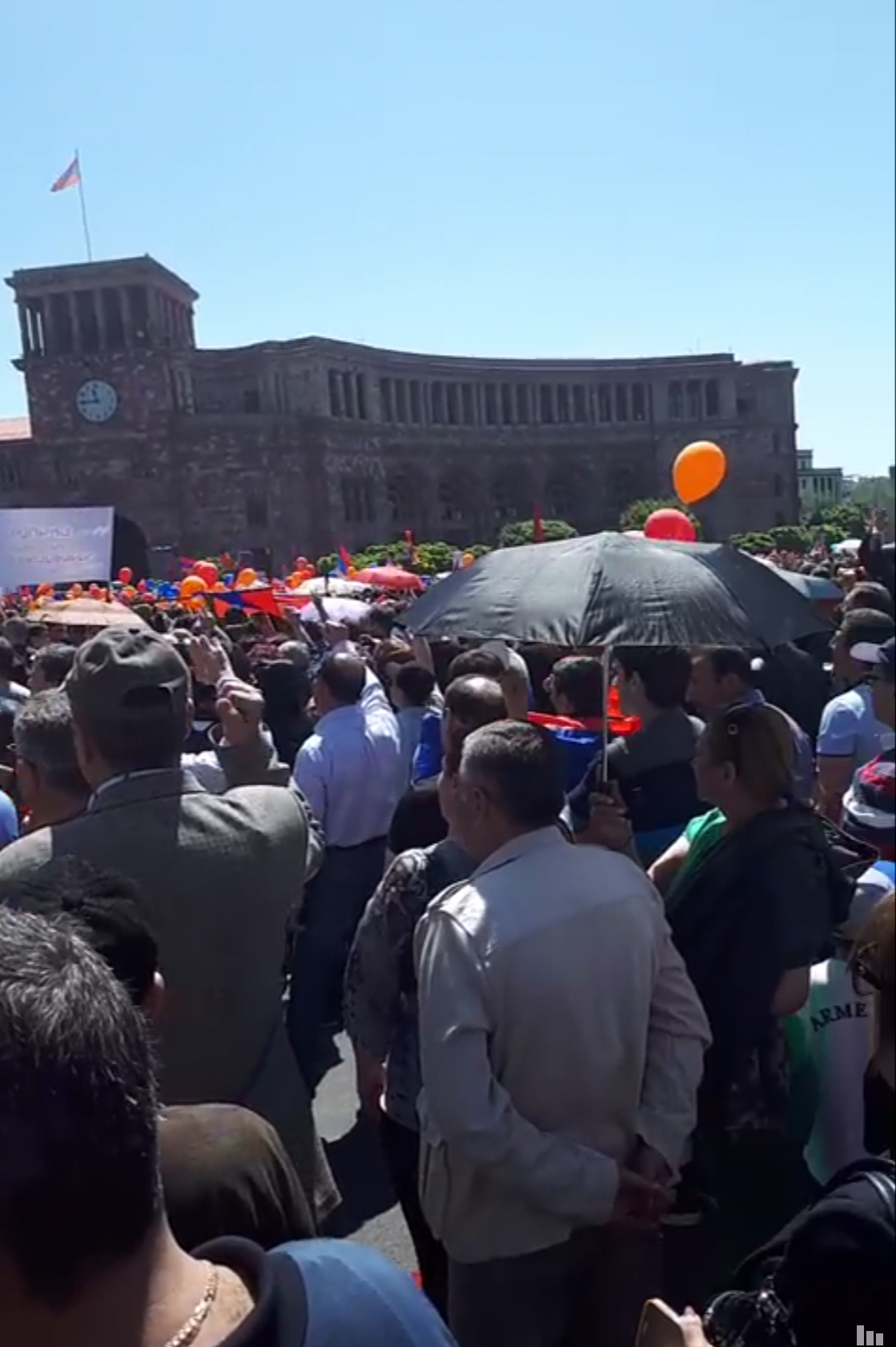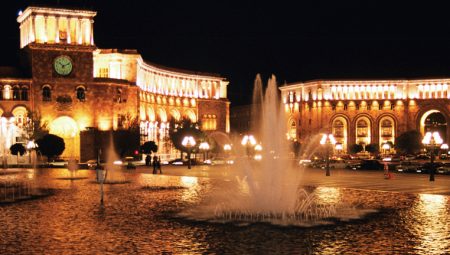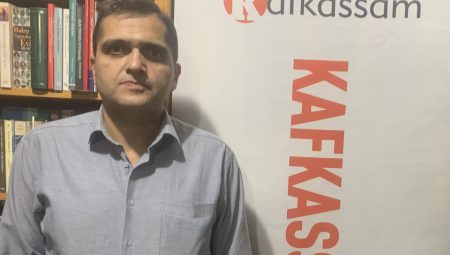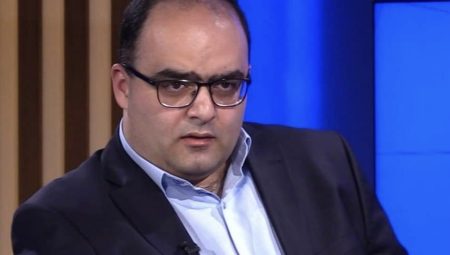This April, Serzh Sargsyan, the pro-Russian autocratic leader of Armenia, confronted massive opposition protests reminiscent of the wave of “color revolutions” that took place in eastern Europe in the first decade of this century. Like past political revolutions in Serbia in 2000, Georgia in 2003, and Ukraine in 2004, the protests in Armenia shut down the capital and drew heavily on disenchanted youth as well as humor to challenge entrenched autocratic elites.
Led by the former journalist and political prisoner Nikol Pashinyan, demonstrators sought to unseat Sargsyan and his Republican Party of Armenia (RPA), which have dominated Armenian politics for nearly two decades. Sargsyan was first elected president in 2008, succeeding Robert Kocharian, who came to power in 1998.
To sidestep Sargsyan’s impending term limit, the RPA orchestrated a transition from a presidential to a parliamentary system with the intention of selecting Sargsyan as prime minister. Sargsyan’s election to the position on April 17, however, sparked tens of thousands of people to take to the streets against his rule.
Such protests seemingly presented a fundamental challenge to Russian President Vladimir Putin. Putin is terrified by the potential diffusion of mass anti-dictatorial movements to his own country and has long been obsessed by the threat of “color revolutions” in the region. Partly as a result, he has a history of interfering to protect autocrats in Russia’s neighborhood. Putin backed the dictatorial Ukrainian President Viktor Yanukovych, who faced protests in Ukraine in 2013–14 and intervened in a wide range of elections throughout the region, including presidential elections in Belarus in 2006 and in Ukraine in 2004 and 2014. (And of course, Putin has also recently sought to disrupt the democratic process in the United States and Western Europe.)
Several Russian commentators worried that the Armenian protests were part of a Western conspiracy to foment student revolution at Russia’s doorstep and that the opposition might turn Armenia against Russia. Sargsyan has been a constant ally of Russia. In 2015, giving into Russian pressure, he brought Armenia into the Russian-dominated Eurasian Economic Union. Russia in turn has long supported the Armenian government, providing subsidized natural gas as well as critical military assistance to Armenia in its three-decades-long conflict with Azerbaijan over the Nagorno Karabakh territory. Russia has 5,000 troops stationed in Armenia and helps to patrol the country’s border with Turkey. Given Russia’s stake in the regime and history of intervention in the region, one might have expected Putin to throw his full support behind Sargsyan and the RPA. Indeed, after Sargsyan was forced to resign in the face of protests on April 23, Russia initially worked behind the scenes to orchestrate a transfer of power to Karen Karapetyan, the former head of Russian-controlled Gazprom in Armenia. Russian-controlled media outlets began to label the protests “another maidan” directed by the West.
But when the RPA was unable to impose Karapetyan in the face of mass unrest, Putin was unexpectedly silent. Russian media halted its efforts to discredit Pashinyan, and Russian authorities did not try to pressure the Armenian authorities to use force against the opposition as they did in Ukraine in early 2014. After Pashinyan was elected prime minister on May 7 with the support of 13 defecting RPA deputies, Putin was among the first to congratulate him, even though, as a former political prisoner and protest leader, Pashinyan is pretty much the opposite of the kind of leader Putin typically likes to work with. What explains Russia’s apparent acceptance of the latest Eurasian revolution?
PUTIN’S PRIORITIES
To understand Putin’s behavior, it is important to correct several partial misconceptions about Russian foreign policy and its impact in the region. First, despite his reputation for autocracy promotion, Putin cares much more about the geopolitical balance of power than he does about whether countries outside of Russia are democratic or authoritarian. As a result, Putin has been extremely inconsistent in his support for autocrats outside Russia’s borders. (Within Russia is obviously another story.)
Russia has sought to undermine democracy in countries such as Ukraine that are dominated by anti-Russian forces. Putin has supported pro-Russian dictators confronting anti-Russian challengers, such as Ukraine’s Leonid Kuchma in 2004, Yanukovych in 2013–14, and Moldova’s Vladimir Voronin in 2009. But he has been equally happy to support competitive elections and even protests when such measures undermine anti-Russian governments. After Kyrgyzstan’s autocratic President Kurmanbek Bakiyev reneged on a promise in 2009 to deny the United States access to the Manas air base, the Russian government began airing negative stories about Bakiyev in Russian media in Kyrgyzstan and increased fuel prices—moves that helped spark protests that overthrew Bakiyev in April 2010. The Kremlin threw its support behind the much more democratic Presidents Roza Otunbayeva and Almazbek Atambayev. Similarly, Putin did nearly everything to undermine Georgia’s autocratic and anti-Russian President Mikheil Saakashvili and welcomed the democratic transfer of power from Saakashvili to Giorgi Margvelashvili in 2013. Putin is obviously no democracy promoter and, given the choice, would no doubt prefer to deal with other dictatorships. But there is little evidence that he is willing to make any serious effort to foster authoritarian rule for its own sake.
In Armenia, Putin’s acquiescence to Pashinyan was almost certainly facilitated by the fact that Pashinyan, in stark contrast to opposition in Ukraine in 2013–14, made a point of committing to maintain the geopolitical status quo. (This despite the fact that his small election bloc Yelq had earlier called for closer relations to Europe.) The protests saw no European Union flags or other signs indicating that the new forces would challenge the Russia’s regional dominance. Furthermore, Armenia’s vulnerable international position and dependence on Russian military support make it extremely costly for any Armenian leader to leave Russia’s orbit—a fact that likely contributed to Russia’s calm during the protests. Remittances from Armenians working in Russia account for a significant portion of Armenia’s gross domestic product. Russian companies control virtually all of the country’s energy supply. In a possible effort to highlight costs of altering Armenia’s orientation, Russian authorities recently warned that they could at any moment ban the import of Armenian fruits and vegetables.
Understanding the Kremlin’s behavior also requires correcting another common misconception about Russian foreign policy: that Putin is a grandmaster of external politics able to control political outcomes both in Russia’s neighborhood as well as in more powerful countries such as the United States. In fact, Putin may have acquiesced to Pashinyan because he felt that any attempt to save the RPA government would fail. Russian interventions, after all, have a relatively poor rate of success in the post Soviet region. In fact, the Kremlin’s favored candidate has lost in seven of the 11 documented cases of electoral interference since the collapse of the Soviet Union. In 2005, for example, Russia unsuccessfully attempted to prevent the reelection of the Communist Party in Moldova. And after Russia changed its mind and chose to support the communists in 2009, the party fell in the face of protests.
More significant, in 2004 in Ukraine, Putin invested enormous resources and his own prestige to support Ukrainian then Prime Minister Yanukovych’s presidential campaign. His actions, however, created a backlash and helped to spark the Orange Revolution, which led to Yanukovych’s downfall. A decade later, extensive Russian intervention was unable to prevent the rise to power of a stridently anti-Russian government in Ukraine. Although Putin has gained control over Crimea, Russia’s actions have permanently doomed any prospect of Ukrainian integration into Russia’s orbit and severely marginalized pro-Russian parties that used to dominate Ukrainian political life. Ukrainian support for the Eurasian Economic Union has dramatically declined since 2014. After Russia’s experience in Ukraine, Putin may have worried that openly backing an unpopular regime in Armenia would generate a similar popular backlash.
DEMOCRACY UNDER RUSSIAN HEGEMONY
Could recent events augur an emerging model of democratization under Russian external hegemony? By avoiding open challenges against Russian external policies, even small and dependent countries such as Armenia may be able to democratize without fear of interference. The relatively democratic and pro-Russian Kyrgyzstan, which saw a peaceful and competitive transfer of power in elections in late 2017, may represent another example. Such a model of course deprives countries of their rightful ability to choose external allies. But it is still preferable to a situation in which countries lack both external autonomy and internal democracy.
Ultimately, the fate of democracy in Armenia will hinge much more on domestic factors than on actions by Russia. Indeed, the failure of democracy in Russian-dominated countries has had far more to do with domestic factors in these countries than anything Russia has done. It is still unclear whether Pashinyan will move Armenia closer to democracy or continue the autocratic practices of the old ruling party. At the same time, there are several positive signs. First, Pashinyan, a former opposition journalist, is one of the few real outsiders to take power in the post-Soviet region where opposition leaders have typically emerged as defectors from the old autocratic regime. Furthermore, Pashinyan has almost no party organization to speak of and thus is likely to have trouble monopolizing control even if he wanted to. Finally, and perhaps most important, the old ruling RPA has promised to cede control of the government and to go into opposition. It is still not clear whether the party will remain intact or eventually be coopted by the new leadership. But Armenian democracy would be well served by a coherent and oppositional Republican Party that can present a check on the power of the new government.
There is overall little that Armenia or its post-Soviet neighbors can do to get rid of Putin or reduce Russia’s military and economic dominance in the region. But none of this prevents these countries from becoming democracies within their own borders.
By Lucan Ahmad Way





